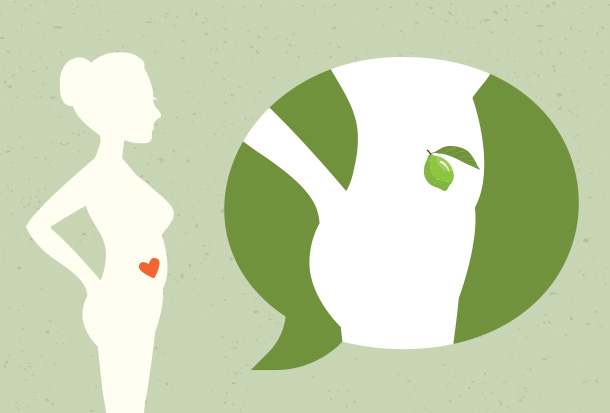FamiBlog
The 8th week of pregnancy - course and symptoms, development of the baby
Although the belly is not yet visible in the 8th week of pregnancy, the baby makes itself felt through discomfort above the pubic symphysis, digestive problems and headaches. The middle of the first trimester is a good time for the first visit to the gynaecologist and the most important examinations, including an ultrasound.

07 August 2019
The baby in the 8th week of pregnancy is the size of a ripe raspberry and can make uncoordinated movements of the trunk, and its heart beats at a rate of 150 beats per minute. At this time, the auditory canal and nervous system (vagus) are forming, which is why the baby responds well to music and rhythmic sounds.
What does a baby look like and what can it do in the 8th week of pregnancy?
In the 8th week of pregnancy, the baby measures about 13 mm. At this point, half of the body length consists of the head, which is slightly tilted forward, but has a clearly defined jaw and lower jaw as well as nostrils and eyelids. The eyes are still quite wide apart, but pupils and iris pigment are forming in the eyeballs. The auricles are also growing, and the auditory canal and vagus are forming. The eighth week of pregnancy is also the time of formation of the inner ear, so that the baby can already recognise the type of activities of the expectant mother and react accordingly, e.g. calm down when walking or listening to soft melodies. The baby's movements in the 8th week are not detectable, but can be observed during the gynaecological examination. During this time, the intestines also form and become longer and more wavy. Gradually they enter the abdominal cavity so that the physiological groin disappears in the next 3 weeks. The baby's spine is still in a flexed position, but is now functional enough to form a solid base for the developing limbs. On the ultrasound scan in the 8th week of pregnancy, you can see the individual joints of the arms and legs as well as the membranous fingers and toes. The ribs develop slowly. At the end of the 2nd month, the lungs, larynx and bladder begin to develop, and the baby's skin remains very thin with a visible network of blood vessels. The eighth week of pregnancy is also the stage when the sexual organs differentiate, but the sex will not be determined for several weeks. At this stage, both boys and girls have what is called a genital lump.
What happens to the mother in the 8th week of pregnancy?
In the 8th week of pregnancy, the first ultrasound examination can be performed. It allows you to confirm the pregnancy, locate the baby and estimate the date of birth. A first trimester ultrasound, also called a genetic ultrasound, is recommended between the 11th and 14th week of pregnancy. It is performed via the abdominal cavity. The examination assesses the baby's development and the anatomy of the uterus and limbs. In the 8th week of pregnancy, the ultrasound examination is carried out with a vaginal probe. The size of the uterus changes during this time, and as it grows, troublesome discomfort occurs. The walls stretching are usually the cause of lower abdominal pain and a pulling sensation in the groin. The uterus in the 8th week of pregnancy can even cause pain in the lower back that radiates into the thigh. In addition, discomfort above the pubic symphysis is due to pressure from the uterus on the bladder, causing the expectant mother to urinate more frequently. A woman may also complain of constipation. Despite the intense changes, the abdomen is not yet round in the 8th week of pregnancy. Symptoms include headaches, even migraine-like headaches, accompanied by dark circles under the eyes, sleepiness or chronic fatigue. Nausea and vomiting promote loss of appetite and weight loss. There is tenderness and swelling of the breasts. The appearance of the nipples also changes. Their tissue darkens and small glands become more visible. On the ultrasound image in the 8th week of pregnancy, a small human being can be seen and the mother may feel the first food cravings.
Sie interessieren sich auch für:
Intimate infections during pregnancy
Many expectant mothers struggle with the annoying symptoms of intimate infections during...
Sore throat during pregnancy
A sore throat is a relatively common condition that also affects pregnant women. However, not all...
Eating raw meat during pregnancy
During pregnancy, the expectant mother has many desires. But not all of them can be freely...
Stem cells and cord blood
Bone marrow was the primary source of stem cells (bone marrow transplantation involves...






























